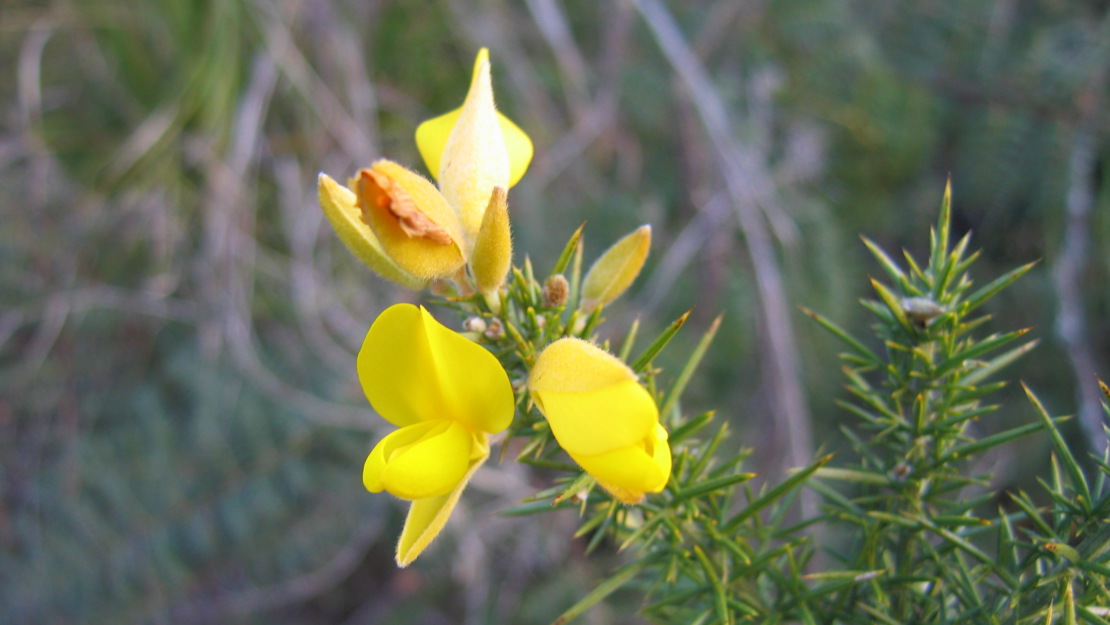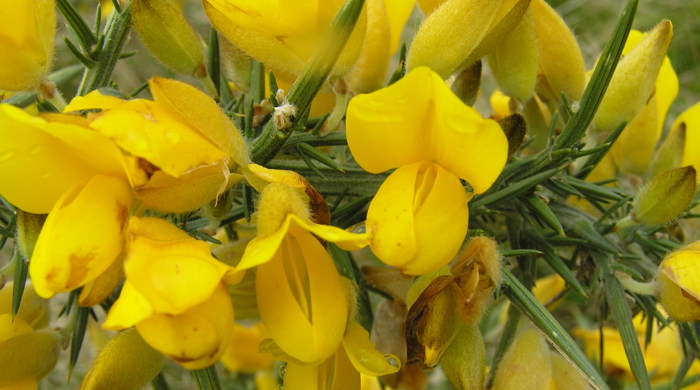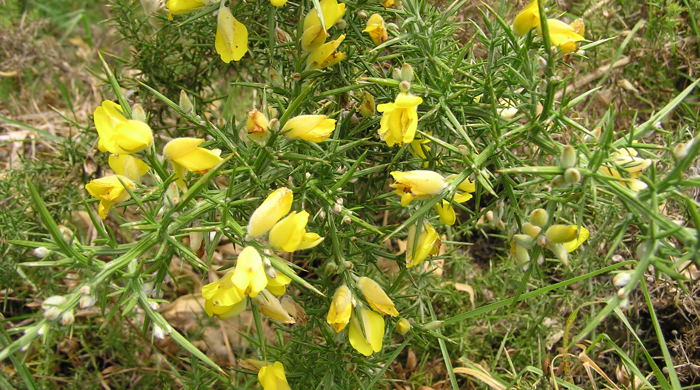Ulex spp.
Gorse
Family: Fabaceae
Origin: Europe

Regional Pest Management Plan (RPMP) status
- Whole region — Sustained control
- Waitākere Ranges Heritage Area priority status
- Hauraki Gulf Controlled Area Notice pest
- Parkland with Significant Ecological Areas — Site-led (on-park and buffer)
General description
Sharp, spiny perennial shrub < 4 m tall. Tap root is very deep, with extensive lateral roots. Leaves are reduced to a spine-like tip. Flowers are pea-like, yellow and borne in May – November. Seed pods are hairy and turn black.
What you need to know
To help protect our environment:
- you must not breed, distribute, release or sell gorse within the Auckland region
- you must not plant gorse within the Auckland region, unless you are transferring an existing plant on your land to another location within the boundaries of the same property
- you must destroy any gorse on land that you occupy if it has been planted in breach of the above rules and you are directed to do so by an authorised person
- you must destroy all gorse plants on any rural land in Auckland within 10m of any property boundary that is a) adjacent to land being used for commercial primary production; and b) where the neighbouring land occupier is destroying all gorse on their land.
Transport corridor operators must destroy all gorse on any transport land that is located within the Waitākere Ranges road corridor weed control zone.
View a map of park buffers where this applies.
To find out more about how we’re protecting Auckland’s parkland from pest plants, see caring for our park buffers.
Habitats
Grassland, shrubland, forest margins, plantations, hill country, coastal habitats, sand dunes, wastelands.
Dispersal
Seeds dispersed by explosive dehiscence, water and birds. Human-mediated dispersal through contamination of gravel and machinery.
Impact on environment
Forms dense stands and outcompetes native vegetation. Alters vegetation composition and native diversity. Reduces food for livestock. Nitrogen fixer. Can impede access to recreational and culturally important sites.
Control
Site management
Follow up treated areas 3 times per year. Encourage natural regeneration of native plants or replant treated areas where possible after 2-3 treatments to establish dense ground cover and minimise reinvasion.
Recommended approaches
Physical control
Method: Dig out.
Plant parts requiring disposal: Seeds.
Disposal options: Remove to greenwaste or landfill if practical.
Biocontrol
Check for presence of agents:
- Gorse colonial hard shoot moth (Pempelia genistella)
- Gorse pod moth (Cydia succedana)
- Gorse soft shoot moth (Agonopterix ulicetella)
- Gorse spider mite (Tetranychus lintearius)
- Gorse thrips (Sericothrips staphylinus).
For more information about how biocontrol works, see What is biocontrol?
Community agrichemical control recommendations
No qualifications: Cut stump and paste freshly cut base of stems with metsulfuron gel or cut stump and spray freshly cut base of stems with 250ml glyphosate green per 1L of water.
Basic Growsafe certified: Cut stump and spray freshly cut base with 2g metsulfuron per 1 L of water.
Certified Handler/Experienced agrichemical user: Foliar spray with 5g metsulfuron-methyl per 10L of water and 20ml penetrant or foliar spray with 60ml triclopyr per 10 Litres of water and 20ml penetrant.
Safety notes
Plant has spines.
Caution: When using any herbicide or pesticide please read the label thoroughly to ensure that all instructions and safety requirements are followed.





